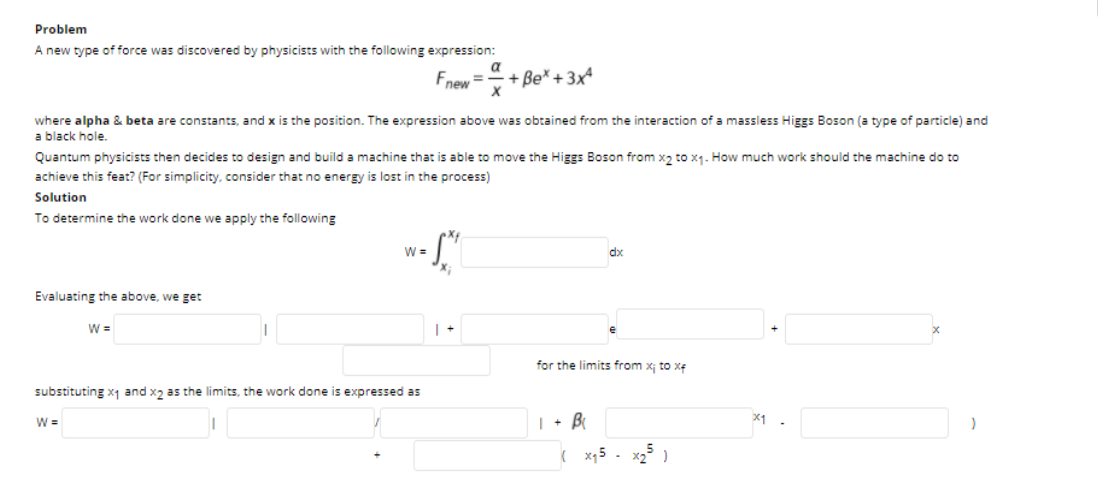A new type of force was discovered by physicists with the following expression: a Fnew= + Be* +3x4 where alpha & beta are constants, and x is the position. The expression above was obtained from the interaction of a massless Higs Boson (a type of particle) and a black hole. Quantum physicists then decides to design and build a machine that is able to move the Higgs Boson from x2 to x1. How much work should the machine do to achieve this feat? (For simplicity, consider that no energy is lost in the process) Solution To determine the work done we apply the following W = x3B dx Evaluating the above, we get W = for the limits from x; to xe substituting x1 and x2 as the limits, the work done is expressed as | + B X1 W =
Radioactive decay
The emission of energy to produce ionizing radiation is known as radioactive decay. Alpha, beta particles, and gamma rays are examples of ionizing radiation that could be released. Radioactive decay happens in radionuclides, which are imbalanced atoms. This periodic table's elements come in a variety of shapes and sizes. Several of these kinds are stable like nitrogen-14, hydrogen-2, and potassium-40, whereas others are not like uranium-238. In nature, one of the most stable phases of an element is usually the most prevalent. Every element, meanwhile, has an unstable state. Unstable variants are radioactive and release ionizing radiation. Certain elements, including uranium, have no stable forms and are constantly radioactive. Radionuclides are elements that release ionizing radiation.
Artificial Radioactivity
The radioactivity can be simply referred to as particle emission from nuclei due to the nuclear instability. There are different types of radiation such as alpha, beta and gamma radiation. Along with these there are different types of decay as well.

Step by step
Solved in 2 steps









